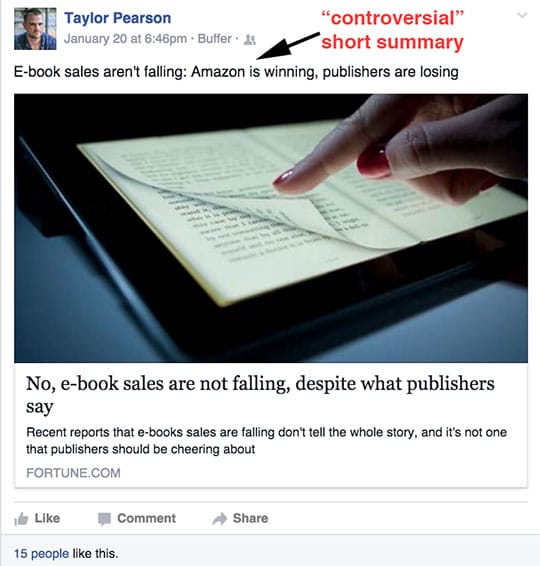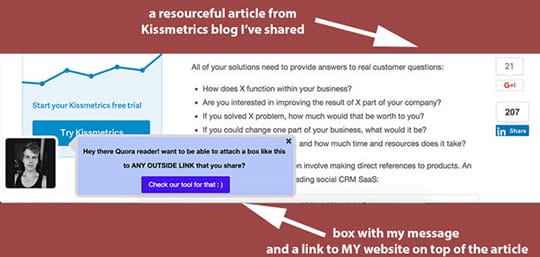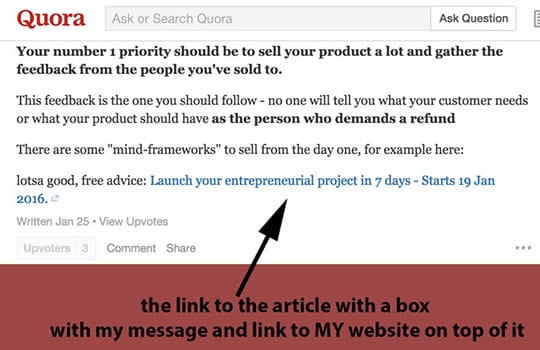When I see my friends starting their new business and trying their best at social media marketing I always see the following pattern: they ALWAYS start with posting only their own content which is too often of very promotional nature to the 70 followers they acquired among their friends with “beg likes”.

Why on earth would you bore your fans with the same selling offer with another ugly stock photo over and over again? I understand it’s daunting to come up with valuable evergreen content all the time (especially when you’re just starting out and have many more important stuff to do) that’s why this first strategy is so useful here.
Strategy #1:
Curating content, meaning stealing the work that has been produced with sweat from accomplished writers. Just kidding! Content curation is simply promoting articles from top influencers or publishers so that your readership can see some other perspective (and frankly is very often of higher value). Not only it is not stealing, but also it’s highly appreciated and can often result in a fruitful relationship with the creator!

Another reason to follow this path is that creating new content is not only much more time consuming than it’s seems to be (ya think this cute infographic can be made in 4 hours – you’re wrong) but also when you don’t have a lot of audiences it’s just a bit disappointing to see your article falling into the bottom of the Internet unnoticed.
The reason no. 3 is that there’s some magic going on when you share from an authority source. It’s like having a picture with a celebrity – it gives you a little bit of their glow. In this case – you start to look more respectable and serious.

Practice time:
- Many content marketers I’ve come across talk about 30/70 ratio: 30% of your stuff and 70% of their stuff.
- When posting other people’s content (and especially when wanting to connect with the author) it’s best to add your 5 cents to the topic: something that you’ve learned or used from the article / a quick summary or a catchy quote or a bit more spicy: something that you don’t agree and want to start a discussion about – this works like magic to starting a debate and engaging your audience!

Tools: If you’re using this strategy on a larger scale, it’s probably best to use a tool to keep track of all the content – we’ve tried Pocket and does its job.
Strategy #2:
Are you 100% sure you’re squeezing every drop out of YOUR OWN juicy content?
EVERYONE is into content marketing these days posting “5 ways to boost your business…” kind of articles on different Facebook groups just to get some traffic to their blog. The problem is that while the amount of content that fights for the user attention keeps growing, the attention itself stays the same (if not dropping due to easily digestible content formats that gain in popularity, like gifs and short videos).

Secondly, Facebook and Twitter know this too, so if there are dozens of articles like yours fighting for this one little spot on a user’s timeline, guess which one will appear there? That’s right – the PAID ONE.
Here’s some data on this: According to Wiselytics.com:
“half-life of a tweet is 24 minutes vs. 90 minutes for a Facebook post”. According to Locowise.com “the average Facebook post reach organically in March 2015 was just 2.27% (with 1 million likes) – 22.8% (with 1 thousand likes)”.
Solution? Reposting your content over and over again. Sounds crazy? It is not.
If you’ve created an amazing piece of content today, your future fans that will start following you next months will most probably have no idea about it unless you repost it later!
If some of your readerships operates in a different time zone, they’ll probably miss your story because it was posted in a weird time for them.
If you think that reheating your old stuff will make you look like you’re not trying – it doesn’t have to!

The same principles apply as with sharing 3. party content: add something extra in the comment – a spicy quote, something that has changed or something that happened that proves the point of the article.
As far as keeping track of all of the stuff you’ve posted again – it’s useful to keep a spreadsheet or use a Buffer-like tool designed especially for this strategy: Meet Edgar. They also run a very informative blog where you can find many examples of how to maximize this particular strategy.
Strategy #3:
Are you sharing other people’s content yet? Good, now monetize the hell out if it!
Imagine a scenario: You’re sharing an article from a well-known source, your fans click and read the article and then they magically get back to YOUR OWN website or opt-in for YOUR LIST. It is, in fact, possible –with a tool like Visibi.ly – and still not that many people use this strategy and they’re missing on a lot of potential traffic and conversions.

We are using it at the moment for our Quora marketing strategy. We’re writing posts on Quora with links to some valuable resources with our custom message and link to our website attached to it! People can still get back to OUR product’s website after they’re done with reading the article – we’re getting a lot of traffic without pitching our product which often would be just inappropriate.

You can use it to just get more traffic, collect emails for a launch or a webinar or if you’re an affiliate marketer you can connect the whole RSS feeds of publishers so that new articles with your message will appear on your social media on autopilot!

This would be it – 3 simple but so often unknown strategies that everyone should be doing to maximize their social media and content marketing strategy! If you have any questions or insights, please ask in the comments.
This article is written by Kamil Kaminski. He is a growth hacker and product guy for Visibi.ly, Applied Mathematics graduate, abandoned his potential career in corporate prison to join the tribe of location independent entrepreneurs, passionate about SaaS products, user experience and digital marketing.





